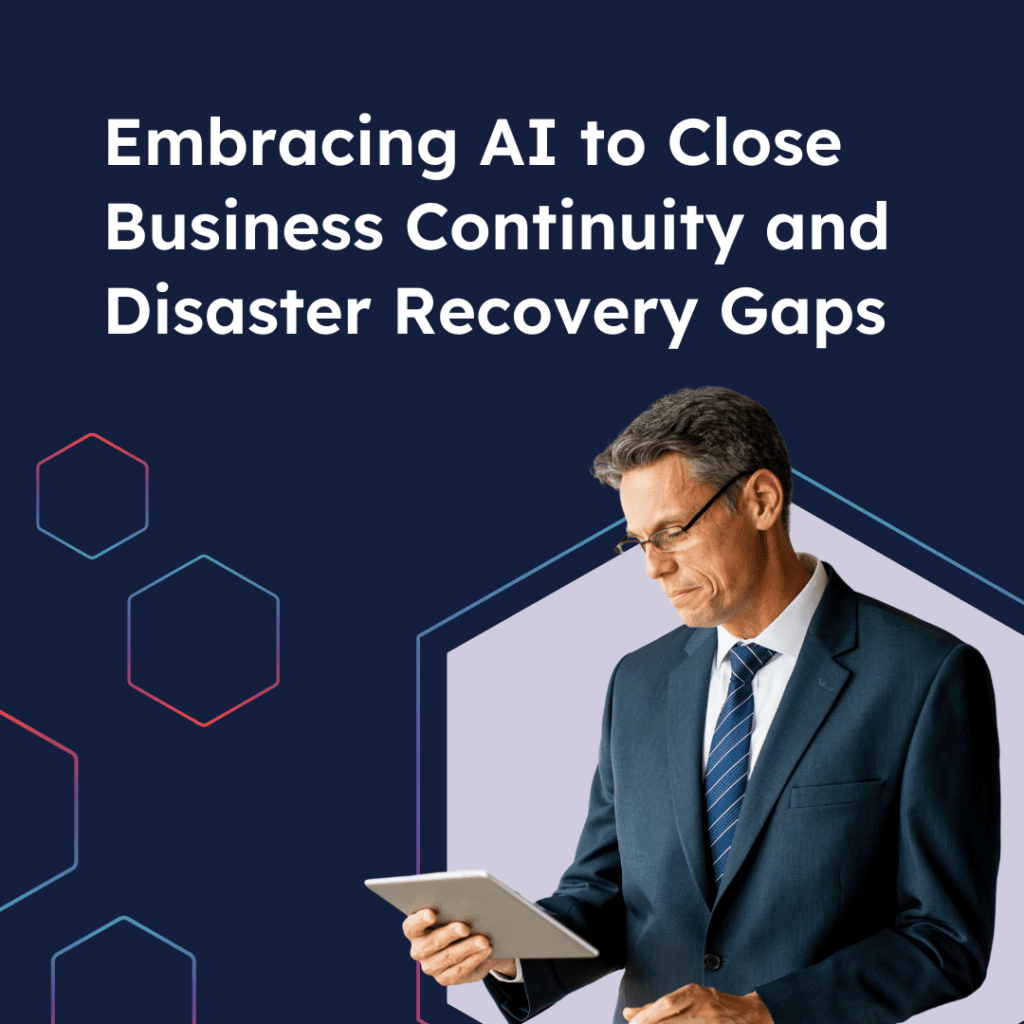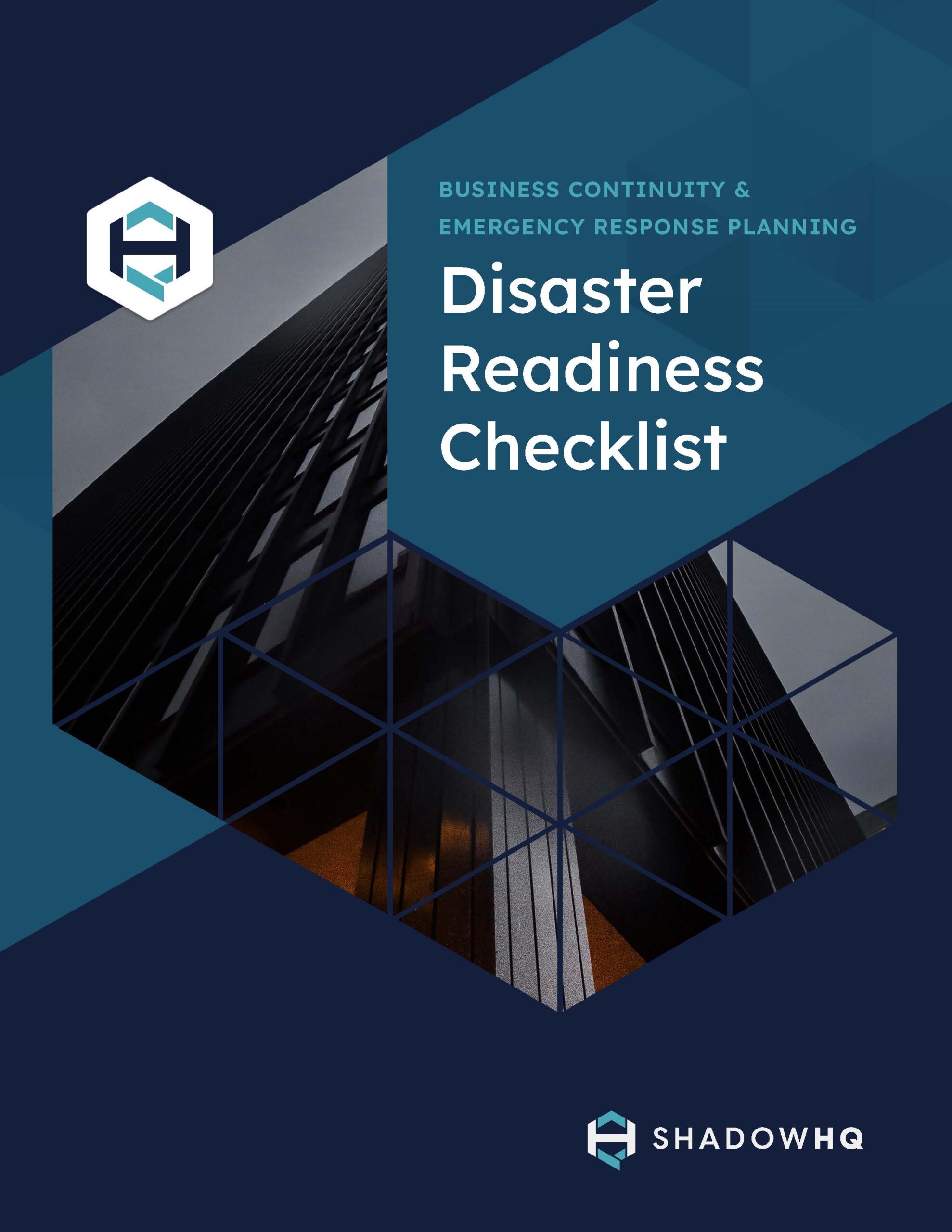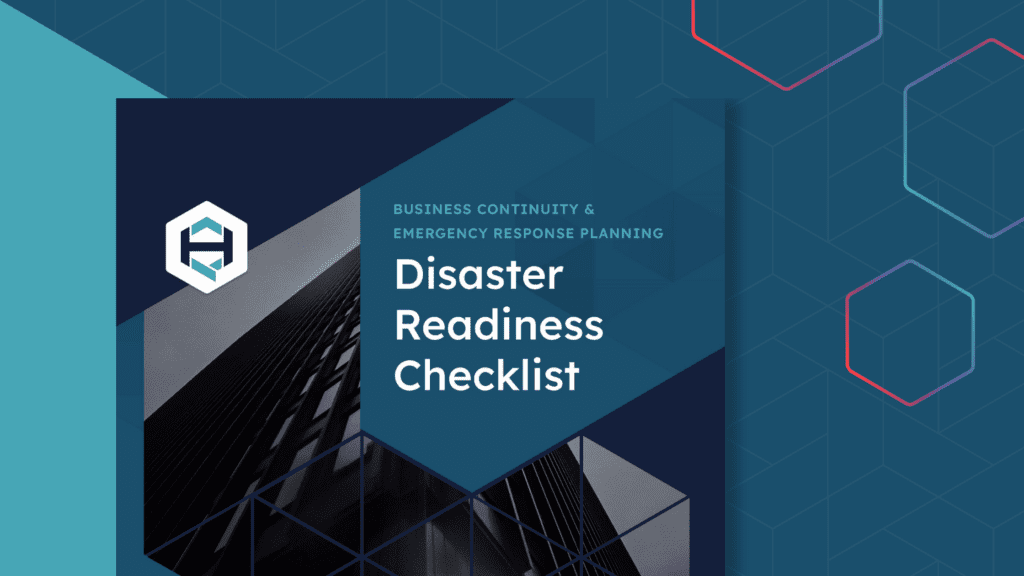AI Disaster Recovery: Strategies for Resilience in Crisis Management
Embracing AI Disaster Recovery to Close Business Continuity and Disaster Recovery Gaps
Business continuity planning is a necessary practice so your company can keep generating revenue, communicating with customers, or providing services. Without a mature continuity program in place, a range of possible incidents can render your organization unable to operate.
However, developing and operating a business continuity program is time-consuming and resource-intensive. As a result, many companies end up with blind spots and gaps throughout their programs that can be devastating in the long run.
Fortunately, the rise of AI has given birth to a wide range of new tools designed to help ensure business continuity and disaster recovery are more efficient and cost-effective, while also enhancing data security.

A recent IBM study found that organizations that have adopted security AI save an average of US$1.76 million compared to organizations that don’t. That’s a significant benefit that makes exploring security AI well worth exploring to close gaps or enhance your business continuity programs.
So, let’s examine some of the main ways that embracing AI can close critical gaps and enhance your continuity and recovery programs.
Understanding Business Continuity and Disaster Recovery
Business continuity and disaster recovery are critical components of an organization’s overall risk management strategy. Business continuity refers to the ability of an organization to maintain its operations and services during a disaster or disruption, while disaster recovery focuses on restoring normal operations after a disaster has occurred. Artificial intelligence (AI) can play a significant role in enhancing business continuity and disaster recovery by providing predictive analytics, automating data backup processes, and identifying patterns in data that can help organizations prepare for and respond to disasters.
Typical Gaps in Business Continuity and Disaster Recovery Strategies Planning
Before we explore how AI can cover gaps in continuity planning, what gaps might you need to cover? Common gaps in disaster recovery include the following:
-
Lacking detection and alerts: You need to know about an incident to start recovering from it, including keeping the business operational. A devastating gap in many programs is not having monitoring tools in place to even be aware of when a disaster has occurred.
-
No backup communication channels: It’s entirely too common for businesses to overlook crisis communications when creating business continuity programs. You shouldn’t depend on the standard lines of communication that remain available.
-
Missing qualified personnel or specialized software: Business continuity and disaster recovery is often a cross-departmental effort that requires subject matter experts and effective tools. Without the right people and platforms being readily available, your teams may struggle to recover.
Addressing gaps in the recovery process is crucial to ensure that affected communities can return to normal or improved conditions after a disaster.
While this is not an all-encompassing list, it helps showcase the complexity of disaster recovery programs and the potential value of using AI tools.
How AI Enhances Business Continuity and Disaster Recovery
Technology is shaping the future of cybersecurity, disaster recovery, and business continuity programs. While trained experts and other tools will almost certainly still be necessary, a new breed of AI tools can add tremendous value that keeps your business going.
So, we’ll explore a few ways we see AI changing the current and future ways businesses respond to disasters and ensure continuity.
Automated Incident Detection and Responses
Advanced automation and AI systems can effectively monitor vital systems throughout the IT ecosystem. Alerting admins when something goes down has been a standard practice for years, but AI can help take monitoring systems to the next level.
AI models excel at parsing a significant amount of data to identify patterns and deviations from them that might otherwise be overlooked. This utility means intrusion detection systems, for example, can become exceedingly effective in identifying anomalous network behavior.

Regardless of the specific application, any tool that helps businesses understand when an incident has occurred is vital to ensuring business continuity.
Predictive Analytics for Proactive Planning
Predictive analytics is an exciting application of AI that will likely find organization-wide use cases. Disaster recovery and business continuity planning can benefit from this emerging field of AI.
How might predictive analytics be deployed to help businesses remain operational? If trained on a significant amount of data, the hypothetical platform may be able to predict the likelihood of a specific incident occurring based on your current IT ecosystem and processes.
The result would be proactive planning based on these projections, helping solve even more gaps before you discover them during a live incident. Having additional insights to guide business continuity planning can have immense returns in the long run.
Compliance and Regulatory Requirements
Many industries must meet compliance standards even when responding to a disaster. For example, you may need to alert customers, collect specific documentation, or involve legal experts.
AI tools can help parse complex compliance and regulatory requirements to find specific standards related to disaster recovery. From there, response plans can be designed with these rules in mind.
Additionally, it’s possible to have an AI tool that monitors specific actions taken by your team during disaster recovery to ensure all actions are properly documented and fully compliant. Leveraging AI to make compliance simpler is an exciting emerging field, and it can certainly help when recovering from a disaster.
Automating Data Backup Processes
Automating data backup processes is a crucial aspect of disaster recovery. AI systems can be programmed to perform regular backups, ensuring that all essential data is duplicated and stored in secure locations. This can help organizations restore normal operations quickly in the event of a disaster, minimizing downtime and data loss. AI-driven predictive analytics can also help identify potential risks and vulnerabilities, enabling organizations to take proactive measures to prevent data loss.
AI-Driven Predictive Analytics
AI-driven predictive analytics can help organizations identify patterns in data that can indicate potential risks and vulnerabilities. This can enable organizations to take proactive measures to prevent disasters and minimize their impact. Predictive analytics can also help organizations optimize their disaster recovery strategies, ensuring that they are prepared for a wide range of scenarios. By analyzing data from various sources, AI systems can provide early warning systems that can help organizations respond quickly and effectively to disasters.
Overcoming Challenges and Limitations
While AI can play a significant role in enhancing business continuity and disaster recovery, there are several challenges and limitations that organizations must overcome. One of the main challenges is ensuring that AI systems are transparent and explainable, so that organizations can understand the reasoning behind their decisions. Another challenge is ensuring that AI systems are secure and reliable, so that they can be trusted to perform critical functions during a disaster. Organizations must also ensure that they have the necessary skills and expertise to implement and manage AI systems effectively.
The Future of AI in Business Continuity
The future of AI in business continuity is likely to be shaped by several trends and developments. One of the main trends is the increasing use of AI in predictive analytics, which can help organizations identify potential risks and vulnerabilities. Another trend is the growing use of AI in automating data backup processes, which can help organizations restore normal operations quickly in the event of a disaster. AI is also likely to play a significant role in enhancing crisis management and response strategies, enabling organizations to respond quickly and effectively to disasters. As AI continues to evolve and improve, it is likely to become an increasingly important component of business continuity and disaster recovery strategies.
Is Your Organization Ready for Natural Disasters?
Adopting AI where you can go far in enhancing business continuity and disaster recovery programs. The current and future state of secure AI tools can go far in keeping companies operational.
However, you’ll still need trained personnel and other platforms to keep organizations operating. ShadowHQ is an industry-recognized leader in crisis communications. Our platform allows your teams to collaborate to ensure business continuity and recover from disasters securely.
Can your business maintain business continuity during a disaster? Find out where your gaps exist by completing our disaster readiness checklist.
EWEBINAR
Experience the ShadowHQ platform
Walk through a cyber breach scenario in a 15 minute demo.

GUIDE DOWNLOAD
Disaster Readiness Checklist
When an emergency happens, every minute counts.


